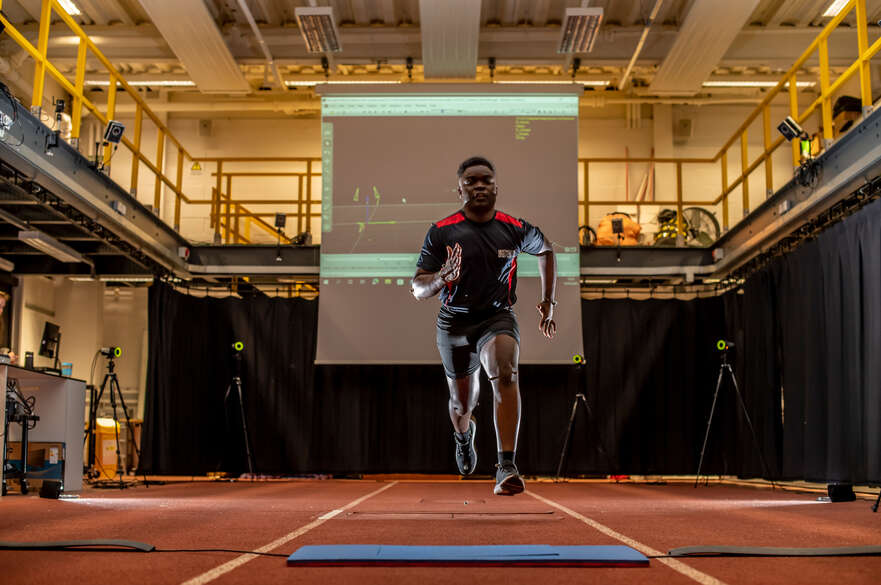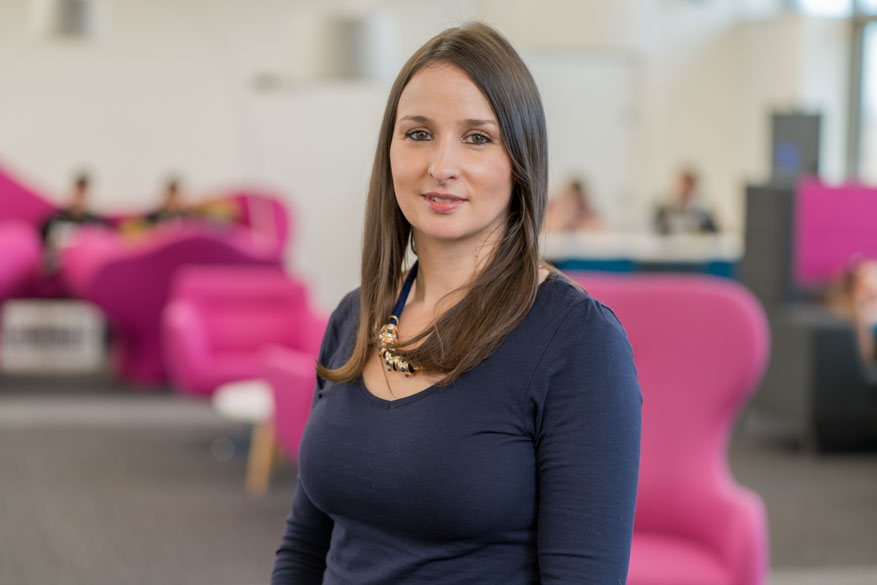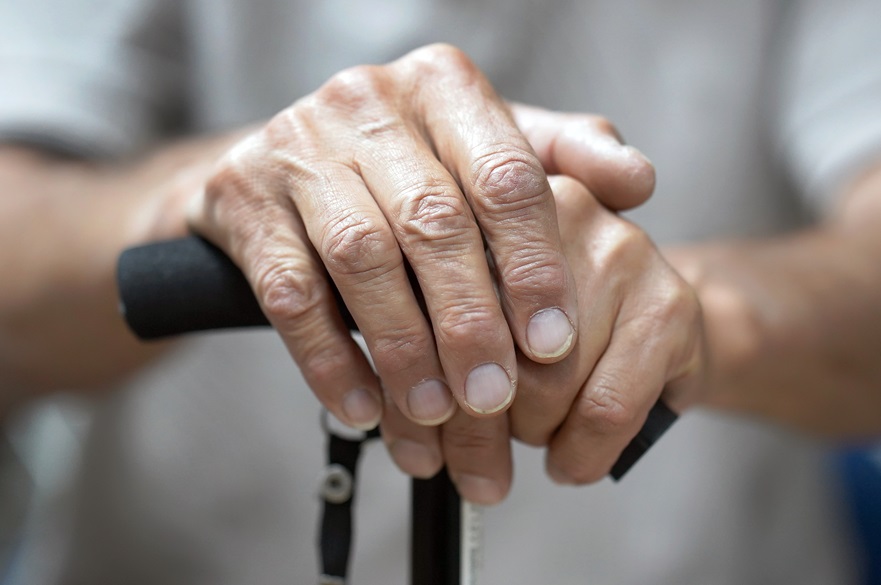Role
Lívia Santos is an Associate Professor in Mechanobiology and Tissue Engineering at the School of Science and Technology, Nottingham Trent University (NTU). Her research focuses on developing micro-physiological models of muscle, heart and bone to better understand tissue regeneration, ageing and exercise. She leads the Master in Research module, Sports Research Project.
Career overview
Lívia Santos joined NTU in 2016 as an Independent Research Fellow in Musculoskeletal Biology, following extensive post-doctoral training at leading research institutions, including Imperial College London, UK and the 3Bs & European Institute of Excellence in Tissue Engineering and Regenerative Medicine, Portugal.
At Imperial College London, she worked in Professor Dame Molly Stevens' lab where she explored the impact of extracellular stiffness on bone angiogenesis supported by a prestigious Intra-European Marie Curie Fellowship (FP7). During her tenure, the Stevens group earned recognition as Research Group of the Year 2014 and Best European Research Group Led by PI Under 40s.
Lívia earned her PhD in Chemical and Biological Engineering from the University of Minho, Portugal, in 2008. Her doctoral research focused on the surface properties of silicone and silicone-hydrogel contact lens materials and their interactions with bacteria.
Research areas
Lívia’s research group aims to better understand processes including ageing, diseases and tissue regeneration using micro-physiological models while avoiding animals or animal-derived products whenever possible. The group combines tissue engineering, bioreactors, and omics approaches including RNA-seq and LC-MSMS.
Some recent publications can be found here:
- Artificial neural network inference analysis identified novel genes and gene interactions associated with skeletal muscle aging Journal of Cachexia, Sarcopenia and Muscle. ISSN 2190-5991
- Modelling Skeletal Muscle Ageing and Repair In Vitro Journal of Tissue Engineering and Regenerative Medicine, 2023: 9802235. ISSN 1932-6254
- Multiomic analysis of stretched osteocytes reveals processes and signalling linked to bone regeneration and cancer npj Regenerative Medicine
Lívia and her collaborator, Dr Yang Wei recently developed and patented a cell culture insert that enables the generation of hundreds of contractile skeletal muscle or cardiac muscle. Potential applications include drug discovery, regenerative medicine or cultivated meat.
Opportunities exist to carry out postgraduate research toward a PhD in the areas identified above. Further information may be obtained on the NTU Research Degrees website.
External activity
- Invited lecture, Engineered tissues for regenerative medicine and drug discovery under the scope of the prestigious program internationalisation@home, KU Leuven, Belgium for two consecutive years
- Oral presentation, A high-throughput muscle model for sarcopenia research. Animal Free Research UK Annual Meeting, Cambridge
- Article for The Conversation, Exercise could help broken bones heal faster – here’s how (theconversation.com)
- Seminar on Exercise and biomaterials in tissue regeneration, Department of Materials Science and Engineering, University of Sheffield
- Invited talk, Exercise and bone health, Pint of Science 2022, University of Nottingham
- Seminar, Acellular biomaterials in tissue regeneration, Orthopaedics, Trauma and Sports Medicine, Medical School, QMC, Nottingham
- Invited talk, Biological assessment of magnetically actuated biomaterials, 1st International Symposium for Women Researchers on Advanced Science and Technology, Kyushu Institute for Technology, Fukuoka, Japan
Lívia is a review editor of the journal, Frontier Biomaterials.
Sponsors and collaborators
Funding
Livia 's lab is currently funded by The Humane Research Trust, Animal Research Free UK, Replacing Animal in Research, NTU, Innovate UK ICURe Explore and BBSRC.
Past funding were obtained from DTA3/COFUND Horizon 2020 Marie Skłodowska-Curie PhD Fellowship Programme, Individual Intra-European Marie Curie Fellowships, Marie Curie Actions FP7, and Individual Post-Doctoral Fellowships, Portuguese Foundation for Science and Technology.
Publications
Selected publications:
1.Civil R et al. P1NP and β-CTX-1 responses to a prolonged, continuous running bout in young healthy adult males: a systematic review with individual participant data meta-analysis. Sports Medicine 2023;9:85. DOI: https://doi.org/10.1186/s40798-023-00628-x
2.Tarum J, et al. Modelling Skeletal Muscle Ageing and Repair In Vitro. Journal of Tissue Engineering and Regenerative Medicine 2023:2023:1-15. DOI: https://doi.org/10.1155/2023/9802235
3.Mathews J, et al. Carnosine increases insulin-stimulated glucose uptake and reduces methylglyoxal-modified proteins in type-2 diabetic human skeletal muscle cells. Amino Acids (2023). DOI:https://doi.org/10.1007/s00726-022-03230-9
4. Santos L, et al. Multiomic analysis of stretched osteocytes reveals processes and signalling linked to bone regeneration and cancer. npj Regenerative Medicine 2021:6;32. DOI:10.1038/s41536-021-00141-3
5. Santos L, et al. Insulin stimulates β-alanine uptake in skeletal muscle cells in vitro. Amino Acids. 2021;53:1763–1766. DOI: https://doi.org/10.1007/s00726-021-03090-9
6. Goncalves L, et al. Insulin does not stimulate β-alanine transport into human skeletal muscle. Am J Physiol Cell Physiol. 2020;318:C777-C786. DOI:10.1152/ajpcell.00550.2019
7. Santos L, et al. In vitro and in vivo assessment of magnetically actuated biomaterials and prospects in tendon healing. Nanomedicine 2016;11;1107-1122. DOI:10.2217/nnm-2015-0014
8. Santos L, et al. Extracellular stiffness modulates the expression of functional proteins and growth factors in endothelial cells. Advanced Healthcare Materials 2015;4:2056–2063. DOI:10.1002/adhm.201500338
9. Santos L et al. Harnessing magnetic-mechano actuation in regenerative medicine and tissue engineering. Trends in Biotechnology 2015;33:41-49 (IF: 19.5) DOI:10.1016/j.tibtech.2015.06.006
10. Pedro S, et al. Platelet Lysate-Loaded Photocrosslinkable Hyaluronic Acid Hydrogels for Periodontal Endogenous Regenerative Technology. ACS Biomaterials Science & Engineering 2017 3 (7), 1359-1369. DOI: 10.1021/acsbiomaterials.6b00508
11. Nair R, et al. Extracellular vesicles derived from preosteoblasts influence embryonic stem cell differentiation. Stem Cells Dev. 2014 Jul 15;23(14):1625-35. DOI: 10.1089/scd.2013.0633.
Press expertise
- Regenerative medicine
- Exercise and stem/ bone cells
- Bone ageing
Course(s) I teach on
-
 |
|COURSE
Sport Science
https://www.ntu.ac.uk/course/sport-science
My UN Sustainable Development Goals





